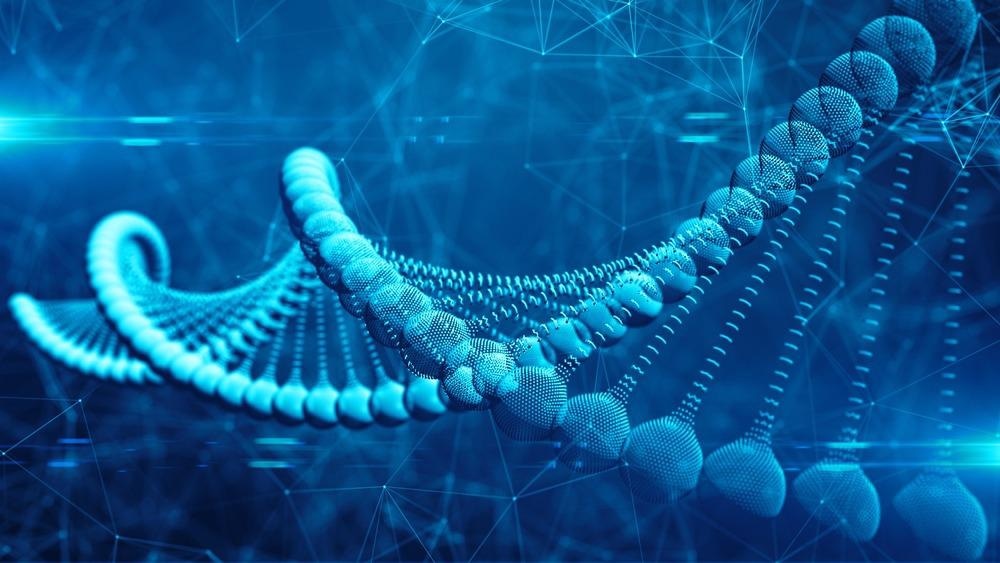Innovative research into DNA nanotechnology has been submitted to the journal, Nanomedicine: Nanotechnology, Biology and Medicine, comprising intelligent aptamer-incorporated DNA nanonetwork (Apt-Nnes). This novel technology can be used for imaging cancers as well as for increased drug delivery of chemotherapeutics.

Study: Structure-switchable aptamer-arranged reconfigurable DNA nanonetworks for targeted cancer therapy. Image Credit: Immersion Imagery/Shutterstock.com
The Need for DNA Nanotechnology
Nanoscale materials, which include materials that are within the nanoscale of 1 and 100 nm in size, have gained traction with the integration of nanotechnology into biomedical research.
Nanomaterials such as nanoparticles and nanocarriers have proven to have great potential when delivering drugs to target sites as they allow increased precision of drug release with a high concentration in the target areas. This also reduces systemic effects including toxicity, which is a major concern for chemotherapy drugs used for cancer therapeutics. The biodistribution of these drugs is non-specific and can cause secondary medical issues such as the elimination of healthy cells and tissue, and even affect organ functioning.
While there have been nanomaterials developed for this application such as liposomes and nanoparticles, these can also be associated with obstacles and limitations including the requirement of extensive surface functionalization to aid targetability as well compatibility with the immune system.
These drawbacks have increased research into DNA nanotechnology. This sector has illustrated benefits such as higher suitability for use in vivo as well as a high level of programmability. These advantages have made DNA nanotechnologies like aptamers potentially more suitable for use in cancer diagnostics and therapeutics such as bioimaging, biosensors and drug carriers.
Aptamers
Aptamers can be described as being short single-stranded oligonucleotides, which are usually 20-60 nucleotides long, with the ability to bind to target molecules with a high level of specificity and affinity.
These DNA molecules can bind a wide range of targets such as simple inorganic molecules, large proteins, and cells, as well as being cheaper nucleotide analogues of antibodies. This can enable aptamers to be used as a more cost-effective alternative, with the added benefit of being easily produced and non-toxic.
Applications of aptamer within DNA nanotechnology have led to innovative research into its suitability for cancer research and therapy.
Innovative Research
The pre-print article submitted to the journal Nanomedicine: Nanotechnology, Biology and Medicine has undertaken research to develop a simplistic approach for constructing a versatile aptamer-incorporated DNA nanonetwork (Apt-Nnes) for carrying and delivering drugs with increased targetability.
This research has been developed for the application of carrying chemotherapy drugs such as doxorubicin (Dox), which can be loaded onto the Apt-Nnes carrier. This drug delivery carrier has a high cargo loading capacity as well as being suitable for biological systems without causing immunity issues or resulting in toxicity.
Additionally, the targetability of this DNA technology was tested for its potential use in cancer therapeutics by evaluating its specificity for the protein tyrosine kinase 7, which is overexpressed in T-cell acute lymphoblastic leukemia. The results of this research consisted of finding the binding affinity of this drug delivery carrier was heavily enhanced through the use of multivalent aptamers. Additionally, the structure itself was suitable for its purpose as its structural integrity was maintained in fetal bovine serum for eight hours.
The small size of this drug delivery carrier enables natural interaction with cancer cells, and this can allow its cancer-specific receptors to detect and enter cancer cells before releasing the chemotherapy drug with a high concentration within a localized area. Cytotoxicity within a localized tumor site using this DNA nanotechnology allow the preservation of heathy cells and tissue within the patient and this lack of systemic toxicity can allow patients to experience fewer adverse effects.
Future Outlook
Utilizing aptamers, this nano-based method can also enable a more patient-centered treatment approach, which can include potentially fewer chemotherapy treatment sessions, especially if sustained drug release can be enabled. The use of smaller doses of the chemotherapy drug is also a possibility with the drug being released in the target area, a larger dose is no longer required to ensure the site is reached. This can be beneficial for health care systems as the requirement of the overall drug treatment dose per patient is reduced and there this can be cheaper for the hospital, allowing the treatment of a larger number of patients.
The quality of life of these patients that are able to experience reduced toxicity is also a benefit of this novel approach and with further research, this research, while in its infancy, may be able to enter clinical practice and increase patient care.
Reference
Wang, Z., Lv, J., Huang, H., Xu, H., Zhang, J., Xue, C., Zhang, S. and Wu, Z., (2022) Structure-switchable aptamer-arranged reconfigurable DNA nanonetworks for targeted cancer therapy. Nanomedicine: Nanotechnology, Biology and Medicine, p.102553. Available at: https://www.sciencedirect.com/science/article/pii/S1549963422000399
Further Reading
Lakhin, A.V., Tarantul, V.Z., Gening, L.V. (2013) Aptamers: problems, solutions and prospects. Acta Naturae. 5(4):34-43. Available at: www.ncbi.nlm.nih.gov/pmc/articles/PMC3890987/
Levy-Nissenbaum, E., Radovic-Moreno, A., Wang, A., Langer, R. and Farokhzad, O., (2008) Nanotechnology and aptamers: applications in drug delivery. Trends in Biotechnology, 26(8), pp.442-449. Available at: https://doi.org/10.1016/j.tibtech.2008.04.006
Disclaimer: The views expressed here are those of the author expressed in their private capacity and do not necessarily represent the views of AZoM.com Limited T/A AZoNetwork the owner and operator of this website. This disclaimer forms part of the Terms and conditions of use of this website.